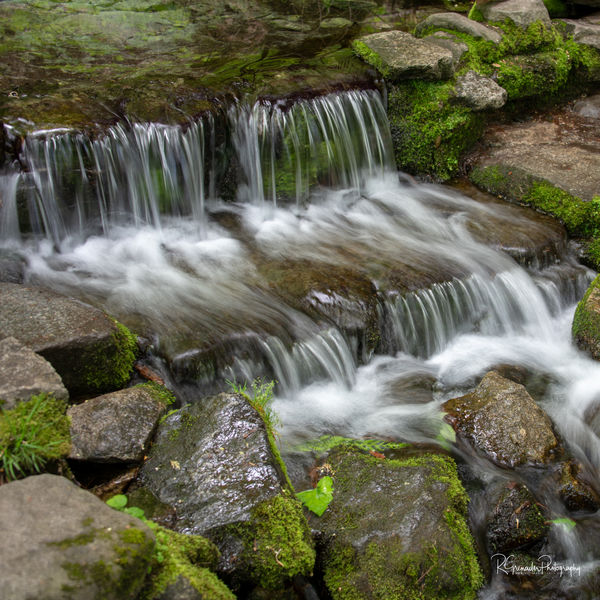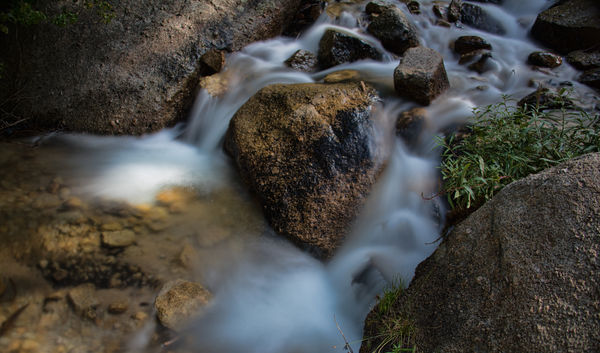Polarizer(filter) or ND filter for Blurring waterfalls?
Jul 7, 2018 11:11:03 #
In playing you tube videos on how to blurr waterfalls some photographers recommend using polarizers and or Nd filters to blurr the falls. And some use a combination of both. For those who have taken alot of waterfall photos what would you recommend and why? If using an nd filter what # is recommended as i do not wish to purchase many as a good quality one is expensive and i would be using it on my tamron 150-600mm (95mm diam) lens or on my canon 55-250 kit lens(62mm diam). The manufacturer(breakthrough) recommends the #6 ND filter to blurr waterfalls. Thanks for your help!!
.
.
Jul 7, 2018 11:16:44 #
Keep in mind that to blur the motion of water the shutter speed needs to be 1/4 second or lower, depending on the quantity of water, ambient light, etc. Sometimes I need both, more often than not, I just use my B + W polarizer which cuts 1.5 stops. Always use the lowest ISO the camera will provide and a tripod and shutter release. If I forget the shutter release, happens, I use the timer with a 2 second delay.
Jul 7, 2018 11:17:49 #
You probably should bookmark this wiki page: https://en.wikipedia.org/wiki/Neutral-density_filter It provides a chart of ND filter ratings about halfway down the page. A #6 doesn't appear on the chart ... What is the f-stop reduction of this model?
Jul 7, 2018 11:21:14 #
IDguy
Loc: Idaho
The ND filter enables slower shutter speed so you can blur the waterfalls.
The polarizer will enhance your image by reducing reflection, if you are at the right angle and adjust it (rotate) before the image. The polaraizer also acts as a mild ND filter worth one to two stops of shutter speed.
The smaller diameter CP (polarizer) will be much less expensive.
Three to six stops of ND filter should be fine when used with lowest ISO and CP.
I wouldn’t use either of those lenses on waterfalls, though. You need a wide angle lens most of the time. I don’t use filters on my telephoto lenses other than for the wide angle end of my 18-300...which would not be my choice for most waterfall images unless it were all I had with me.
The polarizer will enhance your image by reducing reflection, if you are at the right angle and adjust it (rotate) before the image. The polaraizer also acts as a mild ND filter worth one to two stops of shutter speed.
The smaller diameter CP (polarizer) will be much less expensive.
Three to six stops of ND filter should be fine when used with lowest ISO and CP.
I wouldn’t use either of those lenses on waterfalls, though. You need a wide angle lens most of the time. I don’t use filters on my telephoto lenses other than for the wide angle end of my 18-300...which would not be my choice for most waterfall images unless it were all I had with me.
Jul 7, 2018 11:30:07 #
IDguy
Loc: Idaho
CHG_CANON wrote:
You probably should bookmark this wiki page: https://en.wikipedia.org/wiki/Neutral-density_filter It provides a chart of ND filter ratings about halfway down the page. A #6 doesn't appear on the chart ... What is the f-stop reduction of this model?
I suspect that is what he was referring to: 6 stops. Which can also be applied to shutter speed at fixed fstop. It is the sixth one down the table.
Which reminded me I didn’t mention fstop, which also helps you control shutter speed. I usually use f16 on waterfalls.
Jul 7, 2018 11:30:59 #
The filter is an X4 ND 6 stop by breakthrough.Rx by them for waterfalls. Thanks!
Jul 7, 2018 11:36:53 #
redfordl wrote:
The filter is an X4 ND 6 stop by breakthrough.Rx by them for waterfalls. Thanks!
I started to think that was what you'd meant. Continuing with the idea of how strong, assume you're in a shaded forest environment and an initial exposure (no filter) was f/11 and 1/30 at ISO-100. To get the shutter down to 1/4 second without changing the aperture or ISO, you'd need a 3-stop ND. You might find 6-stops to be more useful in stronger light such as broad daylight on a beach. If you can find some example images for situations / waterfalls you'd like to shoot and you can get the exposure parameters, you might guestimate the f-stop reduction from those examples to get to the 1/10'' to 0.5'' shutterspeeds.
Of course, there's also questions about the waterspeed and the desired amount of blur ...
Regarding size, I'd be surprised a 150-600 lens would be the best or even first choice for waterfalls. If you wanted just one screw-in filter, you can get rings that step-up the filter size of any smaller filter size to get to 95mm. You just might not be able to use the lens hood with the step-up rings to that large filter size. But, the 2+ rings you'll need to get to 95mm will provide a bit of shade in place of the missing hood.
Jul 7, 2018 13:13:12 #
Jul 7, 2018 14:13:12 #
redfordl wrote:
In playing you tube videos on how to blurr waterfa... (show quote)
First off, a tripod helps, but is not necessary. When shooting waterfalls, I always rotate the CPL to minimize it's effects; I want reflections for a long exposure. Without a filter, ü or 1/8 sec shutter speed will produce nicely blurred water. First image is of Fern Falls in Yosemite, shot hand held @ ¼ sec.
A ND filter will do the same, but with a longer exposure. I use a Lee Big Stopper 105 mm rectangular filter, which might work on your 150-600. Ask Lee Filters. I use the Lee Big Stopper app to adjust shutter time per recommendations. Image #2 is with a 10x ND on a tripod
Jul 8, 2018 07:50:02 #
I use a Hoya variable ND filter. I take quite a few waterfall and moving water images and prefer the variable ND so that it allows me to dial in the effect that I want without changing filters or moving the camera. I find that the "correct" speed for smoothing water is very subjective and like the ability to take exposures ranging from 1/4 second up to 25 or 30 seconds depending upon the lighting.
Jul 8, 2018 07:50:16 #
I use a Hoya variable ND filter. I take quite a few waterfall and moving water images and prefer the variable ND so that it allows me to dial in the effect that I want without changing filters or moving the camera. I find that the "correct" speed for smoothing water is very subjective and like the ability to take exposures ranging from 1/4 second up to 25 or 30 seconds depending upon the lighting.
Jul 8, 2018 07:50:28 #
tcthome
Loc: NJ
CHG_CANON wrote:
You probably should bookmark this wiki page: https://en.wikipedia.org/wiki/Neutral-density_filter It provides a chart of ND filter ratings about halfway down the page. A #6 doesn't appear on the chart ... What is the f-stop reduction of this model?
Probably means .6 wich is 2 stops. Every .3 is a stop, eg .9 is 3 stops.
Jul 8, 2018 08:21:40 #
As you very well know the blurred effect on running water has become a cliche. You could see 100 images of a fall by different photographers and 99% of the time the blurred effect on the water is evident. I like to have two different views of a fall, one blurring the running water and the other without it. That is me, others will feel that the blur effect is the way to go.
I use a polarizer. Polarizers are actually ND filters with a factor of 2 at full polarization but with some advantages over the ND filter. They suppress or eliminate reflections from non metallic surfaces and saturate colors. Obviously, if you want to extend to several seconds the exposure then only a ND filter will do the job.
I use a polarizer. Polarizers are actually ND filters with a factor of 2 at full polarization but with some advantages over the ND filter. They suppress or eliminate reflections from non metallic surfaces and saturate colors. Obviously, if you want to extend to several seconds the exposure then only a ND filter will do the job.
Jul 8, 2018 09:03:42 #
hawleyrw
Loc: Dayton, OH
Personally, or use a variable ND filter which goes from a couple stops down to completely black. I’ve found this tool in valuable depending on how bright it is and what you’re trying to do
Jul 8, 2018 09:45:04 #
peterg
Loc: Santa Rosa, CA
IDguy wrote:
The polarizer will enhance your image by reducing reflection, if you are at the right angle and adjust it (rotate) before the image. The polaraizer also acts as a mild ND filter worth one to two stops of shutter speed.
 Polarizer first to reduce reflections. Then, add NDs if needed.
Polarizer first to reduce reflections. Then, add NDs if needed.
If you want to reply, then register here. Registration is free and your account is created instantly, so you can post right away.






